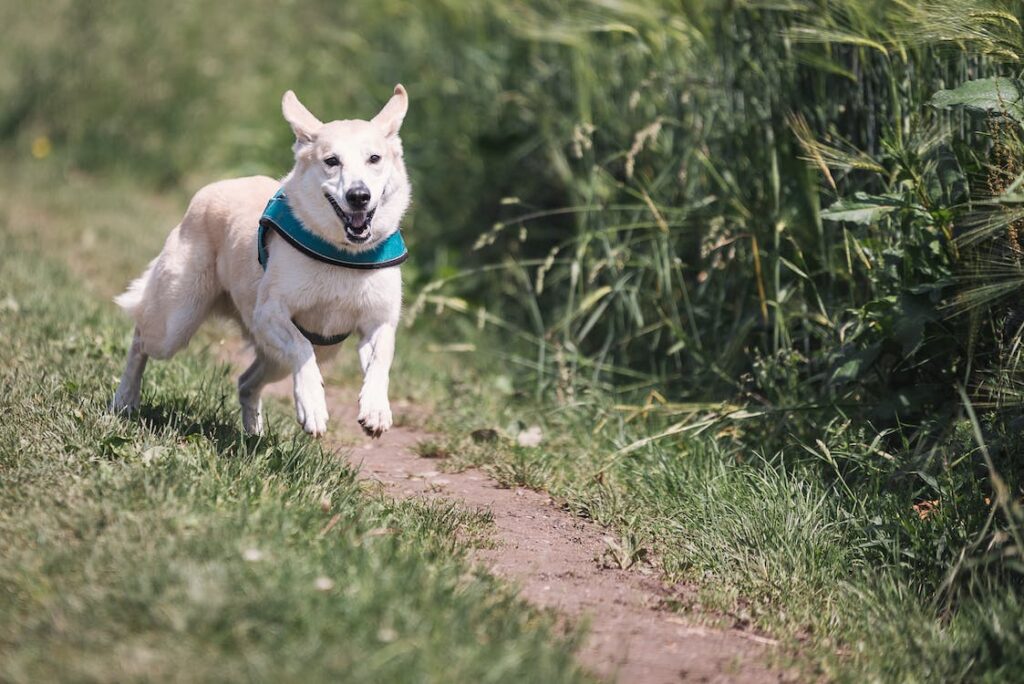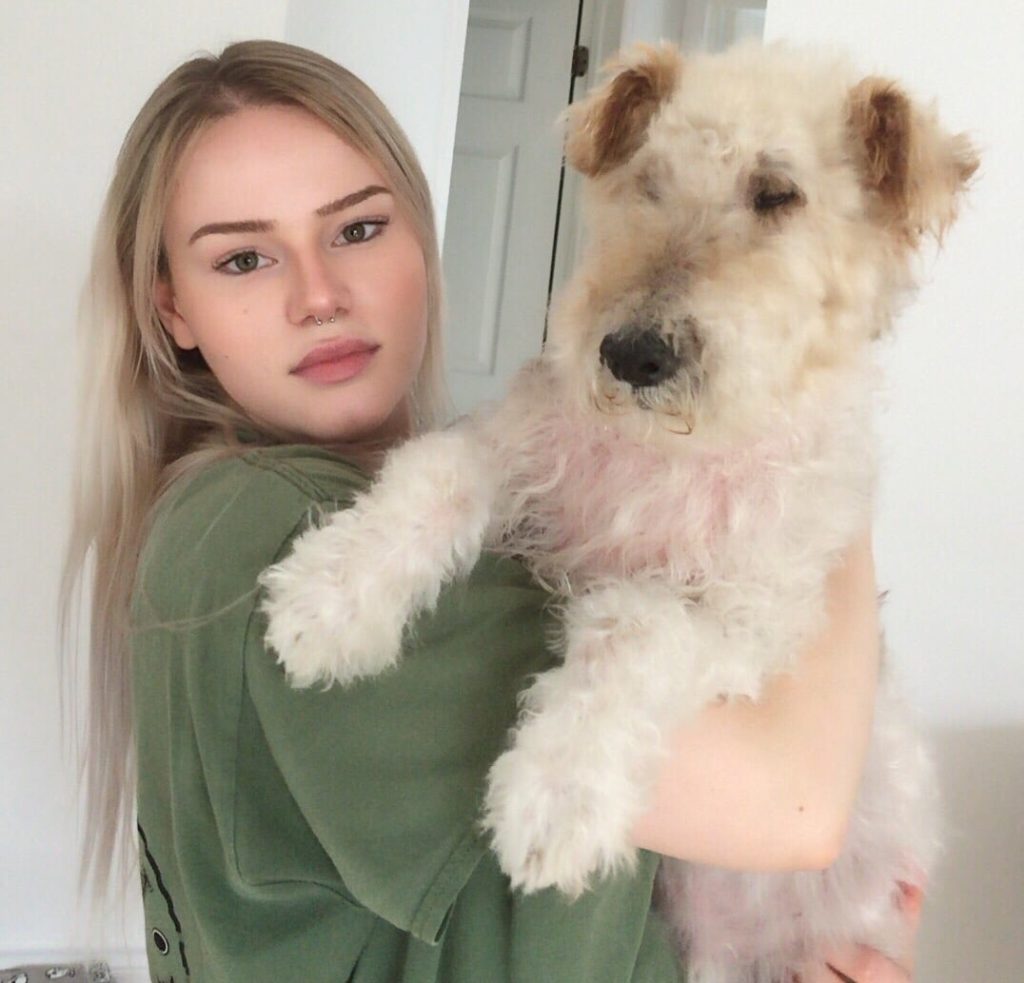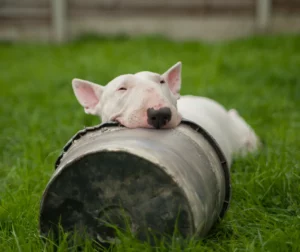Having a dog that keeps running away every time you open the door is a stressful experience for every dog owner.
Some breeds are most likely to run away like Terriers, Labrador Retrievers, German Shepherds, and Border Collies. They are loyal companions but sometimes their impulses and instincts are hard for them to control.
With these tips, you will be able to manage your dog’s behavior throughout his whole life. The techniques used are reward-based which work long-term and are scientifically proven to be the best way to train dogs.
Why Does a Dog Want to Run Away?
It’s important to understand why your dog is running away to effectively address the problem. In any case, never scold your dog for running away. By scolding your dog, you can make the behavior worse and affect the bond between you and your dog.
These are the reasons why a dog may want to run away:
- Frustration
- Fear
- Sex drive
- Separation anxiety
Frustration
Dogs may want to run away out of frustration since they lack stimulation. Your dog can be bored and needs to make up for his excess energy by running away. This way he can get all the stimulation he needs and relieve his desire for exploration and the stress of being bored for too long.
Every dog needs to run, smell, and have fun experiences every day. They love to explore the world around them and take off in search of new smells, sights, and sounds.
Teach your dog the recall command and do not run after him since he could think you’re playing a game.
To prevent your dog from running away, make sure to give him all the physical and mental exercises he needs throughout the day. Most undesirable behaviors are due to a lack of stimulation, so by providing him with enough exercise, you will make sure to keep his body and his mind healthy.
Fear
Some dogs may run away out of fear to escape an unpleasant situation. This happens when dogs are scared by loud noises, strangers, or other animals. Dogs may also run away if they are not properly socialized and lack the skills to cope with new situations and environments.
To help your dog, make sure not to put him in a stressful situation. For example, if you know there will be fireworks or loud noises, keep your dog inside. Try to find him a place where he feels safe and can’t hear the noises as much like a basement, a windowless room, or his crate with lots of blankets on top to attenuate the sounds.
If you’re on a walk and a stranger or another animal is coming, change the route or sidewalks so your dog won’t see or get too close to what’s scaring him. By doing this every time, your dog will trust you more since he knows you won’t put him in a stressful situation.
In this case, the recall command and using treats to lure him are unlikely to work. A scared dog focuses on getting away from what scares him. His appetite is suppressed since stress causes the sympathetic nervous system to activate. The recall command can work if you move away from what scared him, or if the threat is far enough.
It would be best to talk to your vet or dog trainer so they can give you tips on how to help your dog manage his fear and desensitize him to what’s scaring him. Some vets can recommend medications to help your dog manage his fearfulness better. Pairing medications and training can be a great way to see huge progress in your dog’s behavior.
Sex Drive
A dog that is not nurtured or sprayed may want to run away as an instinct to find a partner. If you don’t want to nurture or spray your dog, the only thing you can do is manage his environment and teach the recall command.
Make sure the doors and gates are always closed when you get visitors. Keep your dog on a leash or hold his collar whenever you open the door or use a crate. If you hold on to your dog’s collar, make sure to use a martingale collar to make sure it won’t slip. Always keep your dog on a leash when you go on walks.
If your dog manages to run away, do not run after him since he could think you want to play a game. If he doesn’t, know the recall command, try to lure him with treats and reward him with praises when he comes back to you.
Separation Anxiety
A dog might want to run away due to separation anxiety when his pet parent isn’t home. This is a complex disorder that is extremely stressful and can put your dog’s health and safety at risk. Dogs with separation anxiety will mostly dig exit points to escape, hoping to find their owner.
This disorder can develop following stressful situations such as changes to your usual routine, moving out, a new baby, and even a new work schedule.
Here are the signs of separation anxiety to look out for when you leave or come back home:
- Stressed out when preparing to leave the house
- Excessive howling or barking
- Gets hurt scratching the door or looking for an escape route
- Vomiting, hypersalivation, empties his anal glands
- Destroys doors or window wills
- Urinate or defecate
- Paces around the house
- Excessive licking
If your dog exhibits one or more of these symptoms, it would be best to consult a behaviorist who will help you manage your dog’s anxiety.
How to Stop a Dog From Running Away?
Addressing this behavior can be difficult since it is a self-reinforcing behavior. This means that when your dog runs away, he sees it as a reward since he is getting what he wants and will be more likely to do it again.
For example, when a dog runs away because of fear, the act of moving away from what scared him acts as a reward. The same principle applies to a dog that runs away because of frustration. His behavior is reinforced every time he runs away since he is having fun running around and smelling everything he wants.
To stop your dog from running away, manage his environment, provide him with enough mental and physical exercise, and teach the recall cue.
It’s also a good idea to make sure your dog is properly socialized to handle new environments and situations more confidently.
– Mental and physical stimulations
To keep your dog from running away, it’s important to give him the right amount of exercise and mental stimulation throughout the day. This will help prevent boredom and reduce the urge to run away in search of adventure. Remember that a tired dog will have less energy to run away and exhibit undesirable behavior.
To provide mental stimulation, give him something to chew on and interactive toys. Chewing is an essential need for dogs. It is also very stimulating for them.
An interactive toy can be a treat dispensing ball like a Kong, an Omega Paw, or a West Paw Toppl. Other types of interactive games are a snuffle mat and a licking mat.
Feeding your dog with an interactive bowl is a must that every pet owner should own. It is a great way to help your dog exhibit natural behaviors that he would otherwise find in a natural habitat. Interactive bowls also help to keep him busy, work his brain, and increase the duration of meals.
By providing lots of stimulation to your dog you will be able to relieve boredom, reduce stress and anxiety, help him relax, and more!
– In case your dog gets lost
If your dog has already taken off running, it’s essential to stay calm and call his name from a distance so that you don’t scare him further. Be persistent and patient as you work to recall your dog. You may want to use treats or toys to help lure him back.
Remember that it is best to never chase him as this will only reinforce the running away behavior.
If your dog is still not responding to you, it may be necessary to enlist the help of dog professionals or animal control. These individuals will be able to guide how best to handle the situation and may even be able to help you find your dog if necessary.
Call the SPCA to let them know you lost your dog. As soon as they find him, they will bring him to the shelter and contact you.
Also, make sure your dog is wearing a collar with an ID tag and microchip in case he does get lost.
– What you should not do
Never scold your dog for running away because he will likely stop coming to you when called, even if he knows the recall command. Losing your dog is a stressful experience, but so it is for your dog. By scolding him you can increase his stress levels more than he already was, which can lead to anxiety or aggression issues.
Furthermore, your dog doesn’t know why you are scolding him. He is scared of seeing you angry and doesn’t know he did something he shouldn’t. Whenever you call or touch your dog, it should always be for something positive. Dogs are very sensitive beings. They feel our emotions, especially when we touch them.
Calling your dog for something he doesn’t like will make him less likely to come to you when called. The same principle applies to calling your dog for nothing. This means that every time you call your dog you should give him something in exchange, like a toy, a treat, or some pets and praise.
How to Teach the Recall Cue?
Teaching him the recall cue will greatly help in this type of situation. If your dog took off running because he was scared, make sure not to bring him back to the stressful situation he was running away from in the first place.
The recall cue is one of the most important dog commands. This command can save you from many dangerous situations for both your dog and the people around him.
There are many recall games to teach a dog to come happily when called. Chase games, where the dog is encouraged to chase and catch up to you, can increase the speed of the recall. Hide-and-seek games increase a dog’s drive to get to his owner. Retrained recalls, where someone restrains the dog by the collar while the owner calls, use frustration to increase a dog’s drive to come to the owner.
This behavior must be maintained continuously throughout the dog’s life due to the likelihood of the dog finding reinforcement elsewhere for running away.
– First step
Start training your dog in a room he feels safe and where there are no distractions.
To teach your dog to come when called, start by getting your dog’s attention. You can call his name or make appealing noises. Show them a treat and call them. As soon as they take a few steps towards you, give them the treat and repeat the exercise. It is very important not to repeat the cue to create emphasis on the word.
Once they understand the exercise, you can add a verbal cue. Say “come” as soon as your dog takes a few steps towards you. When they come to you, give them the treat and praise them with a happy voice.
You can also add a hand signal to help reinforce the verbal cue. When saying “come”, extend your arm with an open palm and move it towards you. As soon as your dog takes a few steps towards you, say “come” and give them the treat.
Dogs work for us to get paid, just like us with our boss! So, whenever you call your dog pay him with a reward. If you call your dog for no reason or to scold him, he might stop coming when called because he associates the verbal cue with something negative or not interesting to him. There should always be a positive outcome for your dog when you call him.
– Second step
When he understands the command in one room, do the same exercise in every room of the house. When he reliably comes when you call him, you can then add some distractions and increase the distance.
To increase distance, teach the dog to come at greater distances, and around obstacles.
You can add distractions to the environment by playing YouTube videos with interesting sounds to your dog like dogs barking. Other types of distractions can be having visitors, or calling him when he’s playing with something.
After training your dog in your home for a while, you can then go outside, staying close to the door. This will make the exercise a lot harder since being outside is very stimulating for your dog. There are sounds and smells which can be difficult for your dog to ignore.
Use a long line for safety and to allow the dog more freedom while preventing complete freedom. Some dogs can never be taught 100% reliable recall.
Don’t go too far from the house in the beginning. You can move further from the house only when your dog reliably listens to you. Then, you will be able to practice in places where there are lots of distractions like a dog park or a street full of people.
By understanding why your dog is running away, providing him with the right amount of exercise and mental stimulation, and following the right steps in an emergency, you can help ensure your dog’s safety and reduce the chances of him running away.






